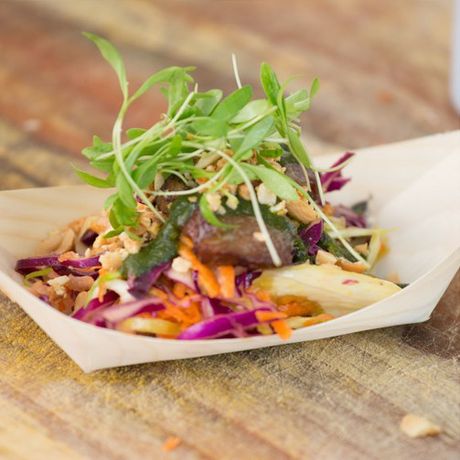A meeting organised by the ATLAS Tourism and Gastronomy Group with the support of the International Institute for Gastronomy, Culture, Art and Tourism (IGCAT) in Ponte de Lima, Alto Minho, Portugal, 29-30 May 2014
In recent years the relationship between food and tourism has grown ever closer: food has become one of the key element of tourism experience, and tourists have become one of the major market for local and regional cuisine (Dodd, 2011; Hjalager and Richards, 2002). But what is it that tourists seek in regional gastronomy? Is it traditional food, the ‘authentic’, ‘real’ cuisine of a region, or is it increasingly the new, innovative aspects of food and gastronomy that draw the crowds?
With the designation of the “gastronomic meal of the French” as world intangible heritage by UNESCO, recognition of the importance of historic food cultures seems to have arrived. The heritage of nations and regions is not just bound up in bricks and mortar, but increasingly in the way in which we lead our everyday lives, including the way in which we prepare, eat and talk about food. A number of other countries and regions have tried to emulate the French model, with Traditional Mexican cuisine and Peruvian cuisine having been listed as UNESCO intangible heritage, and Catalunya trying to gain recognition for Catalan gastronomy in 2013. In Portugal, various elements of national and regional gastronomy have been enshrined as national heritage in Portuguese law. The idea is that by conserving the traditional ways of gastronomy, we preserve our heritage, but also make it more attractive for tourists seeking authentic cuisine.
On the other hand, many of the current coterie of ‘gastrostars’, such as Ferran Adrià or Rene Redzepi, take a different view of food. For them, traditional gastronomy represents a stock of culinary DNA that can provide the inspiration for innovation and creativity. By re-inventing food and the way we eat, these gastronomic pioneers have also turned eating into a creative experience that challenges traditional notions of food. Ferran Adrià is also now taking gastronomy out of the restaurant with the planned opening of a museum and visitor centre called El Bulli 1846, reflecting both the 1,846 dishes created at his El Bulli restaurant and the year that Auguste Escoffier was born. Adria aims to attract some 200,000 people a year, far more than could eat at the restaurant when it was open. The El Bulli Foundation will draw inspiration from sources such as the Cirque du Soleil, Salvador Dali and his museum in nearby Figueres, and MIT’s Media Lab. The new centre will cost 6 million euros to build and 3 million euros a year to run when it opens in 2015.
Which approach is best placed to secure the future of regional gastronomy – conservation or innovation? This question is a major concern for the International Institute for Gastronomy, Culture, Arts and Tourism (IGCAT), which is currently leading a number of research projects on regional and local food and its relationship to tourism and culture. Through collaboration with ATLAS, IGCAT hopes to make a contribution to the debate around regional gastronomy, tourism and authenticity.
IGCAT and ATLAS are therefore organising a meeting in Portugal in May 2014 to bring together practitioners and academics to consider these issues. We therefore welcome input from those involved in the tourism and gastronomy fields in the form of academic papers or practice viewpoints around the following themes:
- Links and contrasts between tradition and innovation in gastronomy
- The attractions of regional gastronomy and food for tourists
- Synergies and frictions between food, gastronomy, culture and tourism
- The development of new business models in gastronomy
- Links between agriculture, food production and tourist consumption
- The role of events in supporting local food cultures
- The contribution of the cultural, creative and artistic sectors in developing new food systems
The meeting will include a debate on tradition and innovation in gastronomy, practice and academic paper sessions and regional wine and food tastings. The meeting will be organised along the same lines as previous expert meetings of the Tourism and Gastronomy group, with an intimate and focussed approach designed to maximise interaction and discussion between participants.
References
Dodd, D. (2011) Food and the Tourism Experience. OECD: Paris.
Hjalager, A.-M. and Richards, G. (2002, eds) Tourism and Gastronomy. Routledge: London.
Abstract submission
Abstracts of proposed academic or practice presentations should be sent to Greg Richards (g.w.richards@uvt.nl) by February 15th 2014. Abstracts should be a maximum of 500 words, and should describe the content, aims and approach of the presentation.
Scientific Committee
Carlos Fernandes, Politechnic Institute of Viana do Castelo, Portugal
Liz Sharples, Sheffield Hallam University, UK
Greg Richards, Tilburg University, The Netherlands
Diane Dodd, IGCAT, Spain
Registration
Registration for the meeting will be organised via ATLAS. All accepted participants will be invited to register via the ATLAS website.
Meeting fee
The fee for the meeting will be €150 for ATLAS or IGCAT members, €200 for other participants. The fee will include meals in Ponte da Lima. A special reduced rate for students will also be available.
Accommodation
Delegates will be accommodated close the conference venue. The accommodation is simple, but reasonably priced. More details will be available shortly.
Transport
Ponte de Lima is 20km from Viana do Castelo. The nearest airport is Porto, which is well served by budget airlines. Transfers from Porto Airport to the meeting venue and vice versa will be available before and after the meeting.
ATLAS
http://www.atlas-euro.org/
IGCAT
https://igcat.org/

